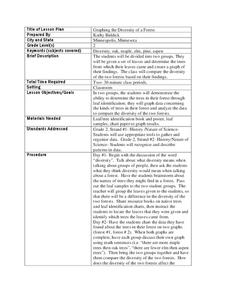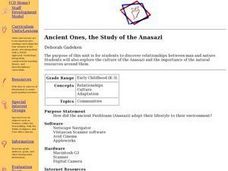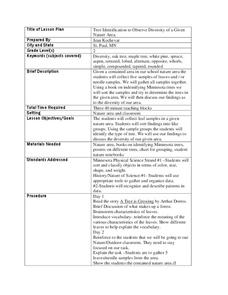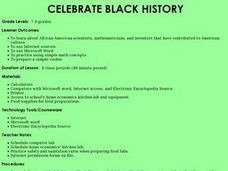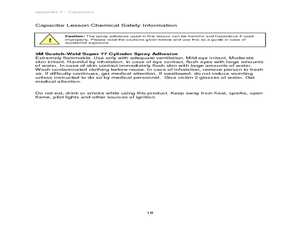Curated OER
Graphing the Diversity of a Forest
Second graders work in groups to identify what types of trees create which types of leaves For this plant life lesson plan, 2nd graders analyze a set of leaves and identify the tree it came from while graphing the data in a science...
Curated OER
Elements of Myth
Students read and act out myths. In this world mythology lesson, students read and analyze myths from various cultures and then recognize their attributes as they prepare presentations of myths that explain natural phenomena.
Curated OER
A World of Myths
Students read and write myths. In this world mythology lesson, students read and analyze myths from various cultures and then recognize their attributes as they write their own myths to explain natural phenomena.
Curated OER
Areology-The Study of Mars
Students examine core samples from Mars and discover what they can use it to tell the history of Mars. In this core sample lesson students create and analyze their own core samples then eat them at the end.
Curated OER
Mimicking Nature; Science, Aviation, Flight, Wings
Students consider the relationship between form and flight and investigate the history of man made flight and how wing shape and flexibility affects the maneuverability of an aircraft.
Curated OER
Drawing on Kenaf
Students explore kenaf, a tree-free paper. In this environmental issues activity, students draw pictures following a presentation about the origin and "eco-friendly" nature of kenaf.
NASA
Stellar Fingerprints and Doppler Red Shifts
Young scientists observe the spectra of elements and compare that to the Doppler effect. Hook scholars from the beginning all the way to the extension activities in this 5E-format lesson.
NASA
Einstein's Gravity
Assist your high school class with researching and applying the principles of gravity so they may further understand why Einstein is so widely recognized, even today. Individuals compare and contrast two different models that demonstrate...
Curated OER
Sunburns and Sore Muscles: Working to Save the Farm During the Great Depression
Fifth through eighth graders engage in a lesson in which they study working class people during the Great Depression. They work to develop an understanding of the economic developments in Arkansas during the 1930's. Learners access...
Curated OER
Interpreting the History, Geology, and Ecology of Monterey Bay
Pupils explore what they know about Monterey Bay in the special topics course and share their information with K-12 grade children at local schools by participating in the Virtual Canyon Project. Students in this service learning class...
Curated OER
Ancient Ones, the Study of the Anasazi
Young scholars explore relationships between man and nature. They examine the culture of the Anasazi and the importance of the natural resources around them. Students examine reasons for Anasazi people to leave this area.
Curated OER
Tree Identification to Observe Diversity of a Given Nature Area
In this tree identification lesson, 2nd graders read A Tree is Growing, discuss what makes up a forest, brainstorm characteristics of leaves, gather samples of leaves and examine their samples. Students will sort leaves and compare them...
Curated OER
Documents of Natural Rights: The Declaration of Independence and The Plan of Delano
Eighth graders analyze the philosophy of government in the Declaration of Independence. As a class, they discuss how this philosophy has caused other revolutions in history and how well it supports our natural rights. In groups, they...
Curated OER
Tsunami
Middle schoolers examine what causes tsunamis and why they all behave differently. In this tsunami lesson plan students complete a group activity after viewing a video.
Curated OER
Floods: Rising Waters and You
Students examine the relationship between human-made structures, flood waters and the increasing population through video clips, websites and a lab experiment.
Curated OER
Genetics 4 Mutations
Pupils identify and illustrate how changes in DNA cause mutations and evaluate the significance of these changes. They illustrate a chromosomal mutation such as duplication, deletion, inversion, and translocation.
Curated OER
Celebrate Black History
Young scholars research African-American mathematicians. In this middle school mathematics lesson, students celebrate Black History by conducting Internet research on an African-American, mathematicians or scientist. Young...
Curated OER
Nature Notes
Students spend some time outdoors and record their observations of abiotic conditions, geologic surroundings and living organisms. They reflect and write about the experience of being observant in nature.
Curated OER
Natural Wonders of China And Japan
Pupils identify some of the attributes of China and Japan and compare and contrast the way Chinese, Japanese, and American artists represent nature in art. The lesson is for upper-elementary classrooms.
Curated OER
Michigan's Lumbering history: Yesterday, Today, and Tomorrow
Fourth graders explore lumbering in Michigan. For this lumbering instructional activity, 4th graders examine the life of a modern day lumberjack and how technology can interfere with natural ecology. Students create a list of...
Curated OER
Periodic History
Students gain a perspective in the development of chemistry. They understand some of the topics in their text and the ongoing nature of research. They then will be able to see the trends of the periodic table first hand through their own...
Channel Islands Film
Once Upon a Time (Sa Hi Pa Ca): Lesson Plan 3
What was the most significant tool used by the Chumash? How did the environment make the tool possible? What group behaviors allowed the Chumash be be successful for thousands of years? After watching West of the West's documentary Once...
Curated OER
Capacitors: What Are They?
Students discover how capacitors help store data. In this computer science lesson plan, students investigate how capacitors can store an electronic charge, eventually helping computers store data. Students create their own...
Channel Islands Film
Magic Isle: Lesson Plan 1
What are the factors that limit growth and expansion? As part of their study of Catalina Island, class members view the West of the West's documentary Magic Isle and research William Wrigley and the Santa Catalina Island Company. After...


